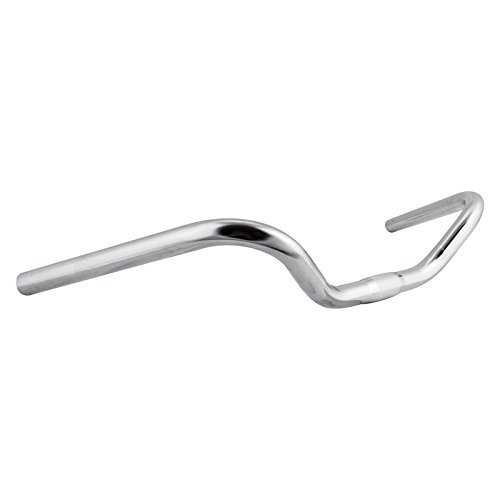When it comes to maneuvering across uneven gradients and rigorous terrain, the handlebars can be a mountain biker’s greatest asset. But is there a science to choosing the best MTB handlebars for your specific riding needs?
Handlebars are crucial for maintaining your balance and position on the bike to control the steering and technical precision. Since they’re basically an extension of your hands and forearms, it’s important to ensure they deliver optimum results, both on the trails and that daily commute.
Here at The Adventure Junkies, we’re breaking down all the factors to consider when looking for the right pair to suit your needs. From the shape to the diameter to the grip cushion and more, we’ll “steer” (pun intended!) you toward the best MTB handlebars to maximize your overall performance on the bike.
For more of our top mountain biking gear recommendations, check out the Best Mountain Bike Grips.
Quick Answer - The Best MTB Handlebars
- Race Face Next
- Soma Oxford
- Salsa Woodchipper
- Origin8 ProSweep
- Sunlite NorthRoad
- Nitto Randonneur
Comparison Table - Best Mountain Bike Handlebars
For the best experience turn your device horizontally| Name | Material | Design | Price | Rating | Review |
|---|---|---|---|---|---|
| Race Face Next | Carbon Fiber | Rise Bar | $$$ | 5.0 | Read Review |
| Soma Oxford | Aluminum | Rise Bar | $ | 5.0 | Read Review |
| Salsa Woodchipper | Aluminum | Flared Bar | $$ | 5.0 | Read Review |
| Origin8 ProSweep | Aluminum | Flat Bar | $ | 4.9 | Read Review |
| Sunlite NorthRoad | Chrome | Rise Bar | $ | 4.6 | Read Review |
| Nitto Randonneur | Aluminum | Flared Bar | $$ | 4.0 | Read Review |
| Name | Material | Design | Price | Rating | Review |
Reviews - The Best Handlebars for MTB
Race Face Next
BEST FOR: OFF-ROAD RIDING
PROS: Increased diameter for a lighter weight that doesn’t compromise strength or stiffness
CONS: None that we could find
Soma Oxford
BEST FOR: COMMUTER RIDING
PROS: Upright position supports riding posture to reduce tension on the back and shoulders
CONS: Heavier than some of the sleeker, more ergonomic models
Salsa Woodchipper
BEST FOR: DISTANCE RIDING
PROS: Bent along three planes to support technical maneuvering on singletracks
CONS: None that we could find
Origin8 ProSweep
BEST FOR: COMMUTER RIDING
PROS: Steering ability is right on-par with some of the more expensive models
CONS: Bikers who prefer more rise will need bar end attachments
Sunlite NorthRoad
BEST FOR: COMMUTER RIDING
PROS: Upright position supports riding posture to reduce tension on the back and shoulders
CONS: Narrow diameter might not be ideal for rigorous climbing
Nitto Randonneur
BEST FOR: DISTANCE RIDING
PROS: Bent, angled shape offers multiple hand positions for maximum comfort over long periods
CONS: Narrow diameter might not be ideal for rigorous climbing
HOW TO CHOOSE THE BEST MTB HANDLEBARS
We suggest paying the most attention to these components when selecting the right handlebars for your mountain bike. If you want to know more about how they function with the other MTB parts, our beginner’s guide is a useful resource.
MECHANICS
The structure of your handlebars should take into account three elements: weight, strength and width. These are largely determined by which material the handlebars are made from.
Choose among aluminum, carbon fiber or chromoly, which all have their own advantages. Aluminum and carbon fiber are the strongest, most durable options, and carbon fiber is also the most lightweight of these materials.
However, a carbon fiber handlebar can’t be tweaked for optimal shoulder width. So, riders who need a narrower grip should opt for chromoly or aluminum, both of which are adjustable.
DESIGN
There are two basic handlebar types: flat bars and rise bars. SingleTracks explains rise height as the measurement between the tapered edges and where the bars attach to the frame.
For mountain bikers, a rise bar is preferable because it shifts the center of gravity further back. It allows them to lift the bike over rugged surfaces and navigate sharp descents more efficiently.
For riders who want to further customize their handlebar shape, there are three sub-categories worth knowing about as well.
Flared bars are wider in the middle and narrower at the ends. Tapered bars are thinner between the stem and grips. Butted bars are thicker on the ends than in the center. These options are ideal if you’re looking for added strength.
LEVERAGE
Also called “torque,” this feature determines how much stability and control you can exert on the bike. In general, a wider handlebar with a shorter stem offers increased leverage because the bar’s steering input requires less force to operate which allows you to conserve momentum.
BikeRadar also points out that with greater leverage, you’ll be positioned more centrally over the bike which distributes both front and rear weight evenly.
To gauge if the handlebars provide enough torque, measure the distance between your hands when leaning over the bike. They should be about shoulder-width apart or within two inches of that radius.
COMFORT
If the handlebar’s location forces you to bend over it drastically to maintain a firm grip, this causes pressure on your hands or wrists, often making them go numb.
To avoid that discomfort, ensure that the handlebar is equidistant from your position in the saddle to the length of your arm extension.
If your hand placement is too spread out or your shoulders are too arched over the handlebars, there are structural adjustments you can make such as lowering the stem or moving the saddle forward.
For extra hand cushioning, MTB gloves are also an option. Our guide can help you choose the right pair.
READ MORE
For more of our top mountain biking gear recommendations, check out these popular buyer's guides:






